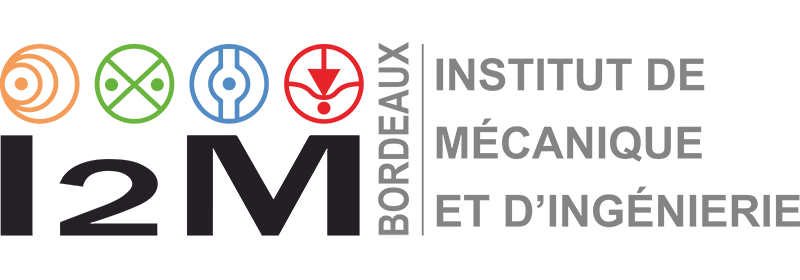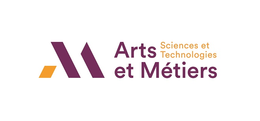16 Février – Soutenance de thèse de Kevin KRAUSE
15 h Arts et Métiers de Bordeaux-Talence dans l'amphithéâtre La Rochefoucault-Liancourt
Subject : Operando infrared characterization of polymer electrolyte membrane water splitting electrolyzers
Cher(e)s collègue,
nous avons le plaisir de vous inviter à la soutenance de thèse de Kevin Krause le vendredi 16 février à 15h00 dans l'amphi LRL de l'ENSAM. Cette thèse s'intitule :
Operando infrared characterization of polymer electrolyte membrane water splitting electrolyzers
Un lien teams est disponible pour suivre la présentation à distance :
https://teams.microsoft.com/l/meetup-join/19%3ameeting_MTBkYWJjNWMtMTgwNi00YTM1LWEyMTktMzZkOTQyZDk3NDNi%40thread.v2/0?context=%7b%22Tid%22%3a%22e034b9b0-7768-4b96-91b2-d8f039816ac1%22%2c%22Oid%22%3a%2253154f07-74b7-444b-96df-1fd481a83f1e%22%7d
Veuillez également trouvez ci dessous la composition du jury et un résumé des travaux qui seront défendus.
Bonne fin de journée et bon weekend,
Stéphane & Jean-Luc
Composition du jury :
DIDIERJEAN, Sophie (Rapporteure)
MILLET, Pierre (Rapporteur)
BAZYLAK, Aimy (Examinateure)
BOBET, Jean-Louis (Examinateur)
TOURVIELLE, Jean-Noël (Examinateur)
BATTAGLIA, Jean-Luc (Directeur)
CHEVALIER, Stéphane (Co-directeur)
Abstract :Understanding and improving mass and ionic transport mechanisms within the membrane used in polymer electrolyte membrane (PEM) water splitting electrolyzers is vital for achieving improved efficiencies that would enable the use of water electrolysis in sustainable energy infrastructures. A better understanding of mass and ion transport within the PEM are essential to achieving the improved performance and efficiencies necessary for wide-scale commercialization of these devices. The work from this thesis aims to improve characterization methods for measuring PEM hydration using an operating microfluidic PEM electrolysis chip coupled with operando infrared (IR) spectroscopy. This development of this thesis is organized through two parts. In part one and prior to the development of the microfluidic electrolyzer, the experimental setup for IR characterization via Fourier transform infrared spectroscopy (FTIR) and IR thermography was developed. This setup was tested through a microfluidic chip designed for semi-transparency in mid-wave IR light. Two exothermic acid-base reactions were imaged in the chip to simultaneously quantify heat and mass transport in the microfluidic channel. Concentration fields of each chemical species and thermal fields of the chemical reactions were resolved from the acquired IR images. Experimental results were used to validate an advection diffusion simulation of the chemical reaction within a meshed replica of the microfluidic chip, for which there was a strong agreement between the results from each dataset. In part two, the methods from part one were honed for the fabrication of the first microfluidic PEM water electrolyzer for transmission-based IR characterization. The water content within the PEM of the microfluidic water electrolyzer was characterized through two operando IR spectroscopy setups. The first IR experimental setup utilized a synchrotron FTIR spectroscopy setup, where the water content of the PEM was quantified using IR for the first time, albeit only at a single point. The second microfluidic PEM electrolyzer setup used a broadband IR source combined with other techniques to distinguish contributions from ohmic, kinetic, and mass transport losses while acquiring IR images. Images were acquired during potentiostatic operation for a range of anolyte concentrations. Electrochemical impedance spectroscopy (EIS) and distribution of relaxation times (DRT) analysis unveiled that higher anolyte concentrations were accompanied by reduced ohmic losses but higher kinetic and mass transport losses. The higher mass transport losses were investigated through images averaged over comparable time scales to EIS and DRT results, and implied that inefficient gas removal occurred at the cathode. These effects were further investigated through the PEM hydration (λ_(H_2 O)) via three characteristic regions where the adjacent channels were either wet, dry, or a mix of both. The local channel wetness was observed to strongly affect the PEM’s hydration through gradients that manifested between cathode and anode channels.Results from this thesis show the potential of transmission-based IR techniques for elucidating transport mechanisms in PEMs of operating microfluidic electrolyzers. Implementing layers that are traditionally implemented in fuel cells and electrolyzers for gas-liquid management into the microfluidic PEM electrolyzer could greatly improve results obtained from the presented methods. Consequently, IR techniques could potentially be used to achieve the contactless quantification of phenomena such as electro- or thermo-osmotic drag. The findings in this thesis provide valuable insights for membrane characterization in electrochemical devices with integrated PEMs, and will inform the next generation of electrolyzer design.






